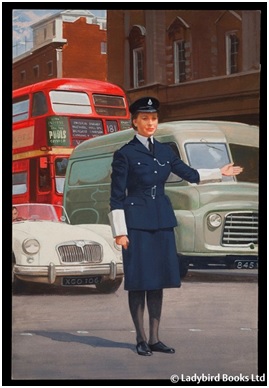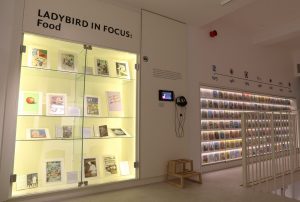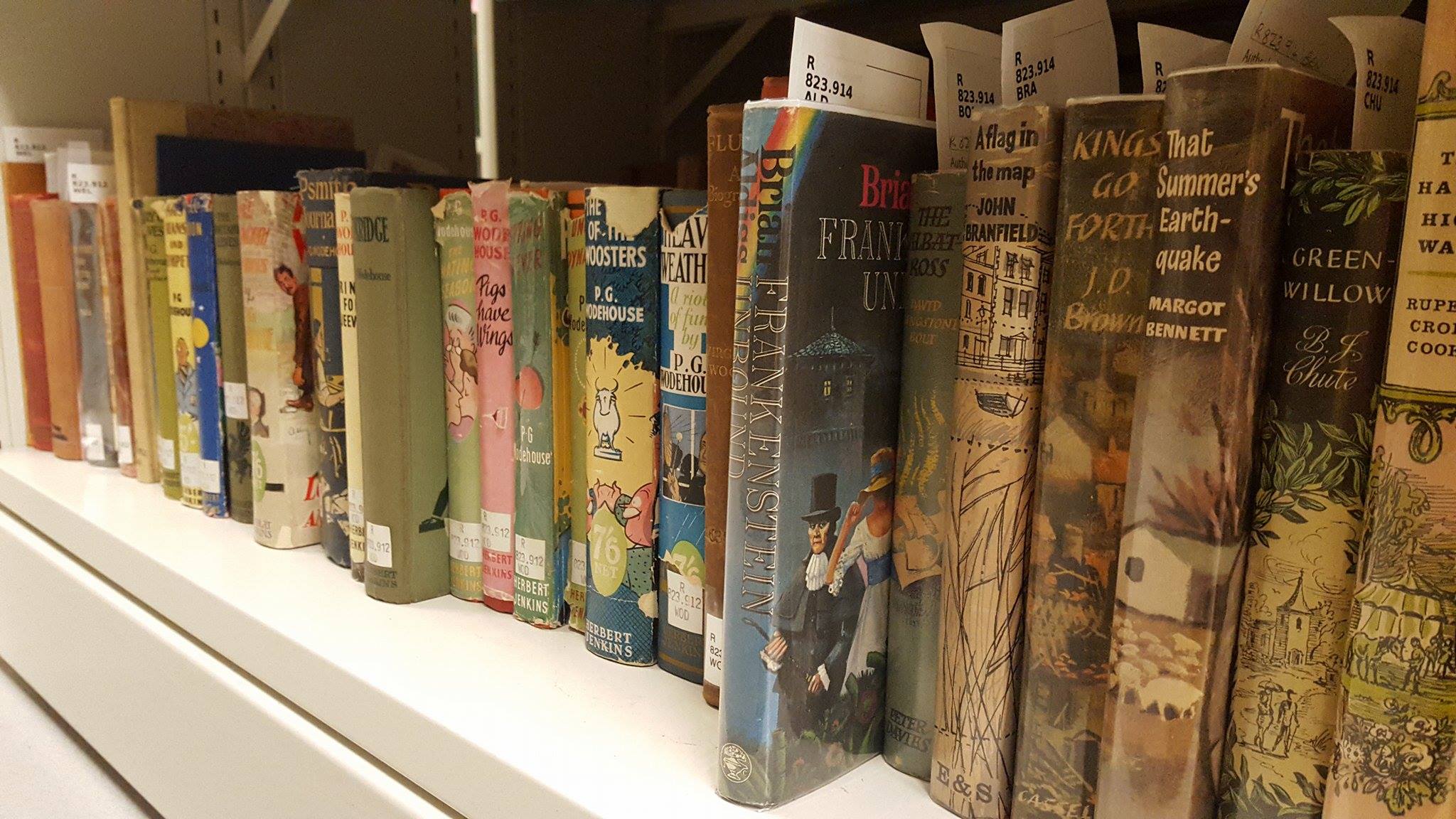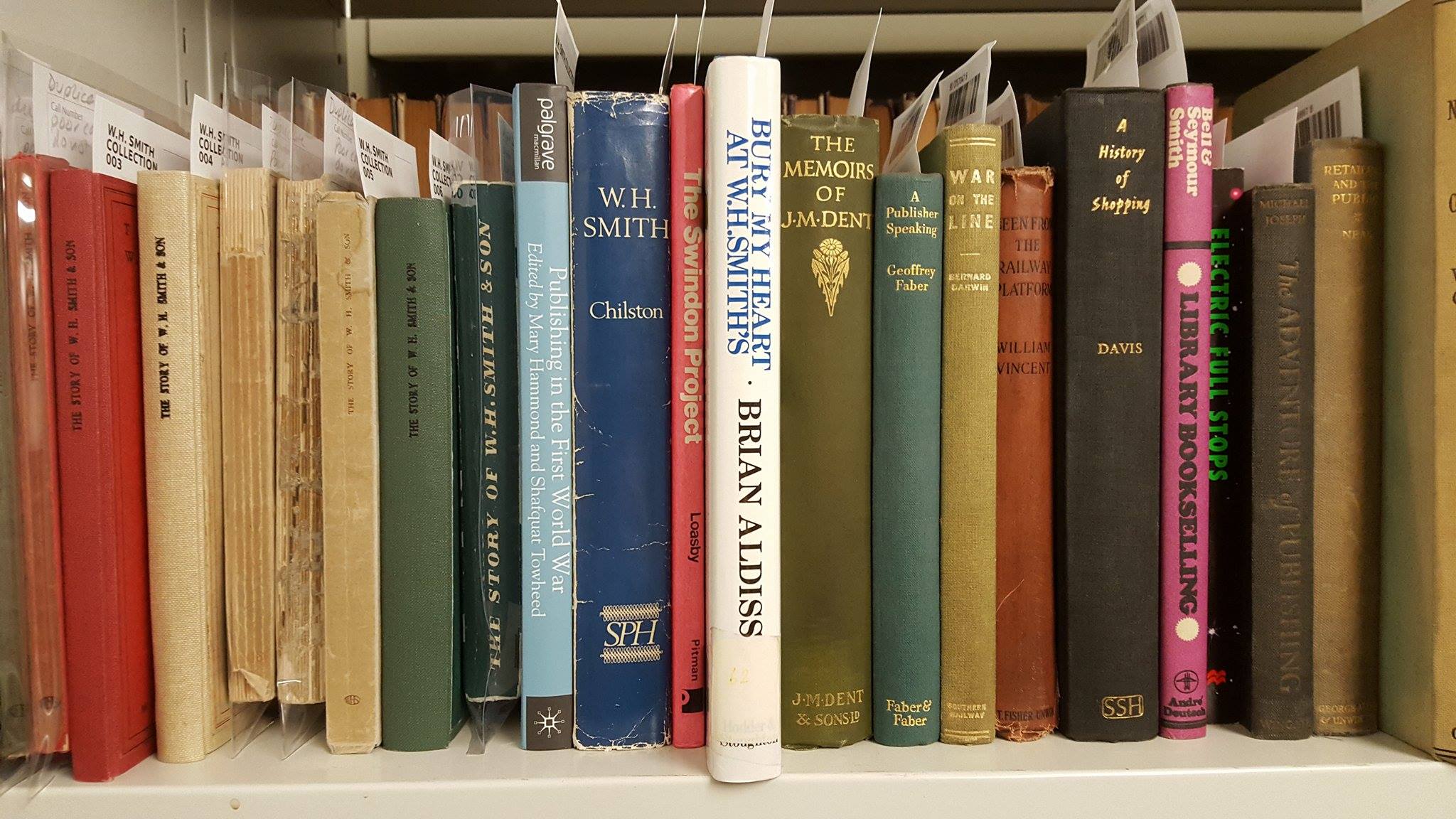Clare Plascow (Collections Officer) describes her exciting auction experience, a rare opportunity to see examples of John Berry’s work for Ladybird during MERL’s extended hours tonight… and her love for kippers…
I like the word kippers. This might seem like a little bit of odd revelation to have come to on a relatively warm day in August, but I think it’s justified having looked through the latest arrival of artwork.

All laid out ready to be checked over
To explain this rather unusual statement, I’ll have to take you back a few months to April. Walking past a colleague’s office, I was hailed with query:
Did you want to go to an auction?
It rapidly transpired that this auction was the next day in Yorkshire, but I was intrigued as it would be the first of two which would include artwork by Ladybird artist John Berry.
The University of Reading’s Special Collection Services holds the Ladybird Archive on behalf of publisher Penguin Random House. Containing approximately 20,000 illustrations in 740 boxes and with the first permanent gallery dedicated to the subject, you’d be mistaken for thinking the University has every illustration by Ladybird within its stores. The truth is there are a few gaps in the collection with some artists retaining the majority, if not all of their work. John Berry was one of them.



Some of the artwork which was already at the University
Berry was employed by Ladybird Books Ltd from 1961 to 1978. Previously a war artist, his first illustrations with Ladybird made their way into The Ladybird Book of London. There a sense of his whimsical humour can be found with the addition of his own Ford estate car directly in front of the Bank of England.

The Bank of England and Berry’s car
Bigger projects soon beckoned with Berry made responsible for creating artworks for the entire People at Work series. Made up of twenty titles, this series generated a glimpse into the pre-digital age employment of the 1960s and early 1970s. Drawing from a combination of photographic reference material and real life, Berry was able to capture day-to-day working life across a broad range of occupations.
It is in this popular series that the aforementioned kippers make their appearance. Written by husband and wife team, Ina and John Havenhand in 1963, The Fisherman was the fourth book in the People at Work series. Designed “to give interesting and accurate information about the Fishing Industry” the hardback volume included the differences between various boats and nets, along with a mention of the variety of ways herrings can be eaten; whether fresh, canned, or smoked.

A clarification: kippers are basically smoked herrings.
Precariously balanced using the edges of the kiln, the man in this illustration is adding herrings to the lines hung across his smoking oven. Depicted in various shades of pink and brown the image could be seen as monotonous, however it’s a testament to Berry’s artistic skill that a sense of intrigue and drama can be found. Looking from below it’s impossible for the viewer to tell how many kippers are being smoked or just how high he has climbed…






